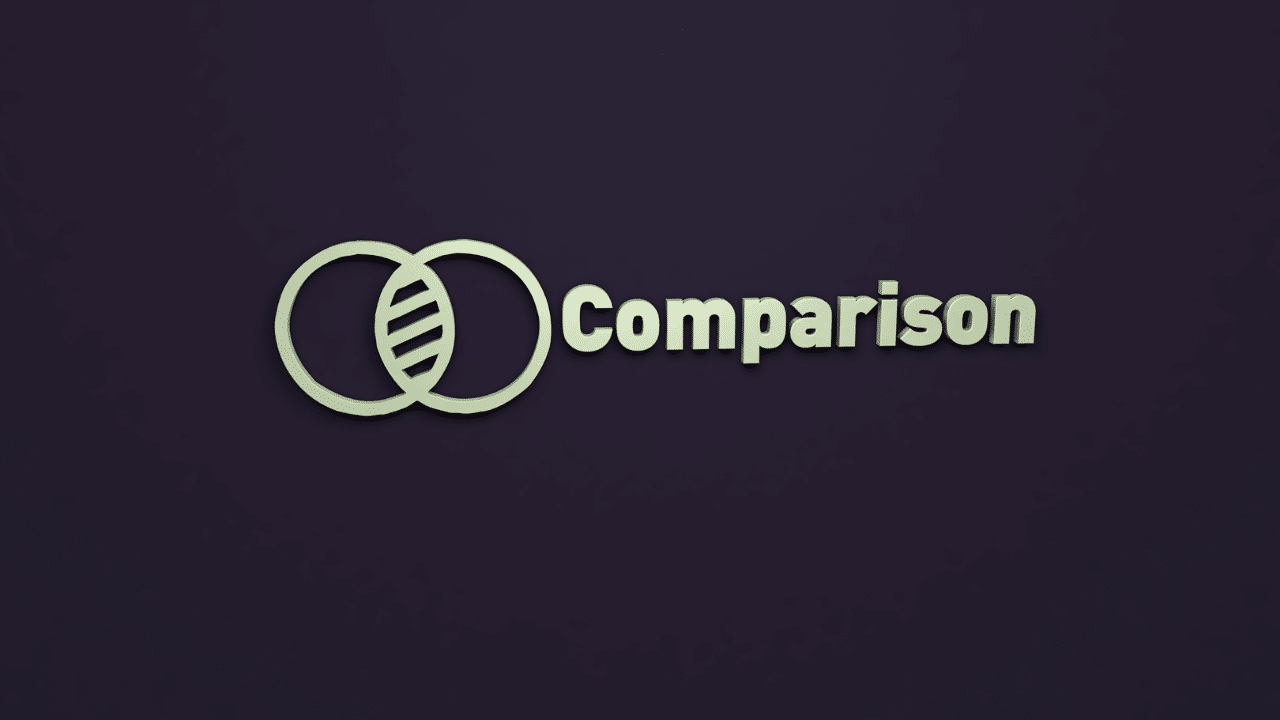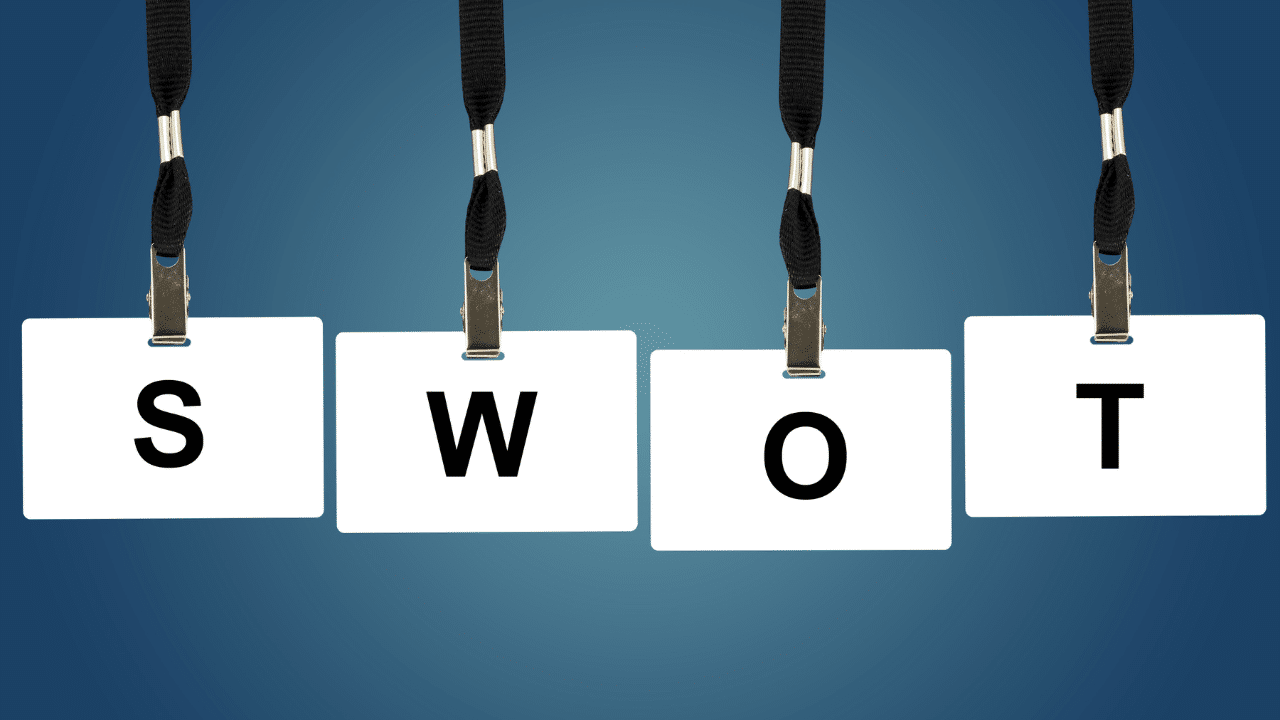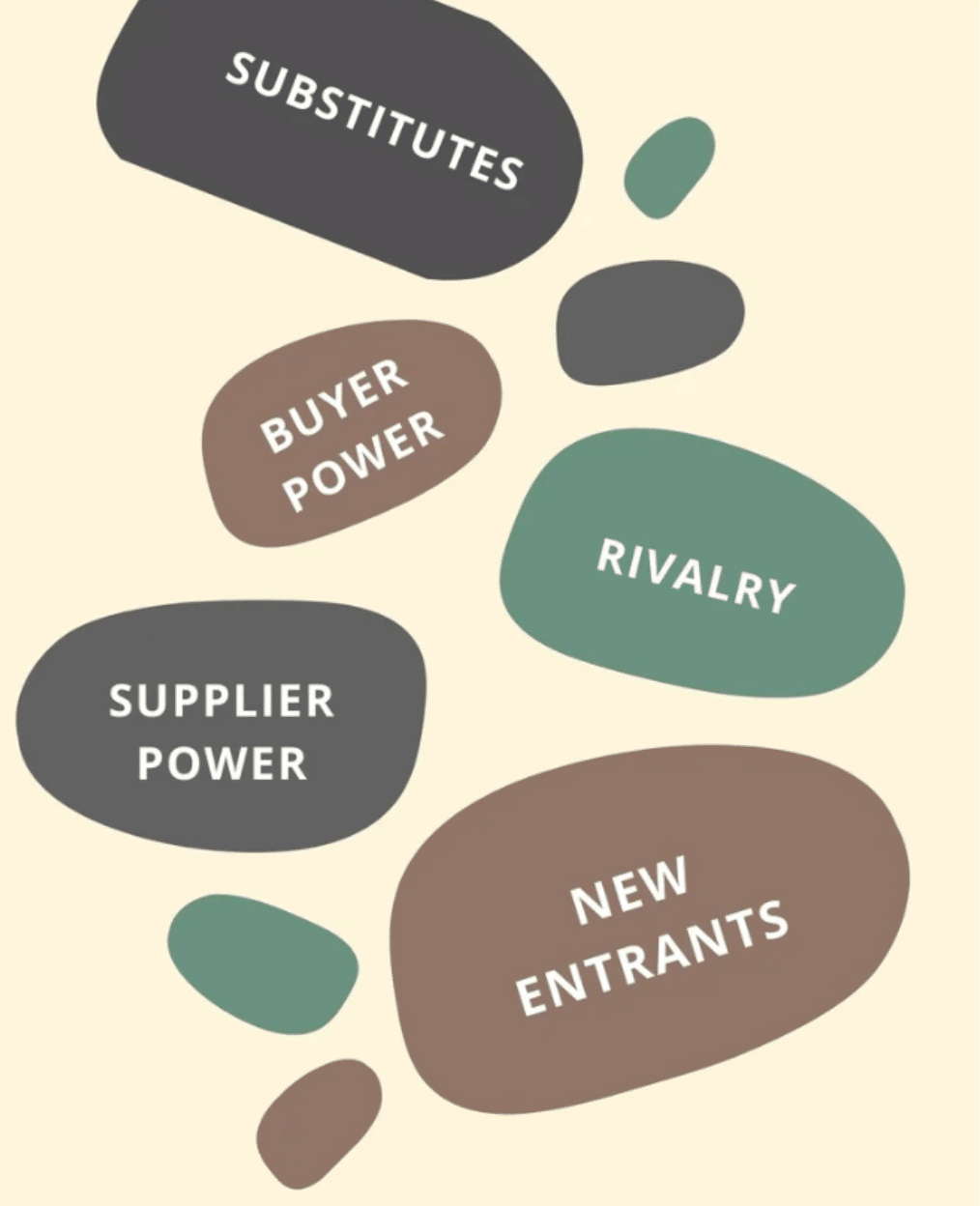What is competitive landscape analysis?
The competitive landscape refers to the scenario in the business environment where companies in a particular industry compete against each other. This environment isn’t just shaped by direct competitors but also encompasses a broader range of factors including technology, regulations, market trends, and consumer behaviors.
In simpler terms, it’s like a battlefield where businesses vie for the same resources and customers. The better a company understands this landscape, the better it can strategize to gain an edge.
Historically, competitive analysis was a straightforward process. In ancient markets and early civilizations, traders and merchants would simply observe their immediate competitors in town squares or marketplaces, adjusting their offerings based on supply, demand, and what their competitors were up to. However, as businesses and markets grew more complex, so too did the methods and tools of analysis in every aspect of the market research.
If you require assistance in conducting a thorough competitive analysis tailored to your business needs, please don’t hesitate to contact us at GlobeMonitor. Our team of experts is here to guide and support you every step of the way.
Importance in Today’s Business World
In the rapidly evolving modern business world, understanding the competitive landscape is no longer just beneficial—it’s essential. Here’s why:
- Strategic Planning: Knowledge of the competitive landscape aids businesses in making informed decisions. Whether you’re deciding to enter a new market, launch a product, or pivot your business model, insights into the competition can guide these crucial decisions.
- Risk Mitigation: By keeping an eye on your competitors and the industry at large, you can anticipate potential threats and address them proactively. This proactive approach can save businesses from costly pitfalls.
- Opportunity Identification: Not all aspects of the competitive landscape are about defense. It can also help businesses spot gaps in the market, emerging trends, or underserved customer needs, paving the way for innovation and expansion.
- Building a Unique Value Proposition: To stand out, businesses must offer something different or better than their competitors. Understanding the competitive landscape allows companies to refine their unique value propositions, ensuring they resonate with their target audience.
In conclusion, the competitive landscape isn’t just a backdrop—it actively shapes the strategies and success trajectories of businesses. As the dynamics of industries change, driven by technology, globalization, and changing consumer preferences, staying updated on the competitive landscape is non-negotiable for modern businesses.
This comprehensive guide aims to break down its many facets, equipping entrepreneurs, startups, and business owners with the insights they need to navigate their industries confidently.
The Changing Business Environment Over the Decades
From the brick-and-mortar days to the dawn of e-commerce, the competitive landscape has seen seismic shifts. Here are some pivotal changes:
- Speed of Business: In earlier eras, businesses might have had years or decades to respond to competitive threats. Today, thanks to technology, market dynamics can shift overnight. For instance, mobile apps can achieve millions of downloads in days, and viral marketing campaigns can disrupt market shares within weeks.
- Globalization: In the past, competition was often local or regional. Now, even small businesses might find themselves competing on a global scale, courtesy of the internet and streamlined international logistics.
- Consumer Empowerment: With the advent of the internet, consumers have gained access to a wealth of information, reviews, and peer opinions. This shift has given them greater power in their relationships with businesses, and companies must now constantly adapt to meet rising expectations.
- Blurred Industry Boundaries: Companies like Apple, traditionally a computer company, have ventured into music, telecommunications, and financial services, showcasing that today’s competitive landscape isn’t confined to single industries.
In light of these changes, understanding the historical context of the competitive landscape is paramount. By learning from the past, businesses can better navigate the present and anticipate the future.
Key Components of a Competitive Landscape Analysis
A competitive landscape analysis doesn’t merely involve looking at what your competitors are doing today, but delving deeper into understanding their strategies, strengths, weaknesses, and potential moves. Here are some fundamental components to guide your exploration:
Market Share

- Definition: This is the portion of a market controlled by a particular company or product. Typically expressed as a percentage, it provides insights into the dominance of companies in a particular industry.
- Significance: Understanding market share helps businesses gauge their position relative to competitors. A company with a higher market share might enjoy benefits such as economies of scale, while a smaller player might identify growth opportunities.
Product Comparisons

- Definition: A detailed breakdown of how your products or services stack up against the competition. This can include aspects such as features, pricing, quality, customer reviews, and more.
- Significance: By comparing products, businesses can identify gaps in their offerings and strategize improvements. It’s also a way to find and promote unique selling points (USPs) that set them apart.
SWOT Analysis

- Definition: A strategic planning tool that helps businesses identify their Strengths, Weaknesses, Opportunities, and Threats. It’s a holistic view of both internal factors (strengths and weaknesses) and external factors (opportunities and threats).
- Significance: SWOT analysis provides a clear framework for businesses to introspect their position and external environment. It assists in formulating strategies by leveraging strengths, addressing weaknesses, capitalizing on opportunities, and mitigating threats.
Competitive Positioning Map

- Definition: A visual representation of how different competitors are perceived in the marketplace. Companies are plotted on a graph based on two dimensions, typically critical attributes that consumers use to make purchase decisions (e.g., price and quality).
- Significance: This map helps businesses visualize market gaps and understand where they stand relative to competitors. It’s a tool to decide positioning strategies, whether they want to reposition, target an unoccupied space, or directly compete on certain attributes.
Incorporating these components into a competitive landscape analysis ensures a comprehensive understanding of where a business stands. It paves the way for strategic thinking, helping companies anticipate moves, counter threats, and find their niche in crowded markets.
The Role of Technology in Shaping the Competitive Landscape
We live in an era of unprecedented technological advancement. From the rise of the internet to the current wave of artificial intelligence and machine learning, technology continues to redefine the competitive landscape in various industries. Let’s dive deep into its transformative role:
Technological Disruptions and Pioneers
- Definition: Technological disruption refers to innovations that significantly alter or replace existing processes, products, or services. Pioneers are those entities that lead the charge, introducing groundbreaking technologies or methods.
- Significance: Companies like Netflix, which transitioned from mail-order DVDs to online streaming, disrupted the traditional entertainment industry. Such pioneers often enjoy first-mover advantages, setting industry standards and gaining significant market share. Conversely, businesses slow to adapt might face obsolescence.
Digital Transformation and its Impact
- Definition: Digital transformation is the integration of digital technologies into all areas of a business, fundamentally changing how they operate and deliver value to customers. It’s not just about technology but involves a change in culture and operations.
- Significance: Digital transformation can revolutionize customer experiences, streamline operations, and unveil new revenue streams. A classic example is Domino’s Pizza, which transitioned from a traditional pizza delivery chain to a tech-savvy company with its app, digital trackers, and online promotions. The result? A dominant market position and consistent growth.
Role of Data in Competitive Analysis
- Definition: In the digital age, data refers to the vast amounts of structured and unstructured information businesses can gather from various sources – be it customer interactions, online traffic, or purchase histories.
- Significance: Data-driven decision-making is becoming the norm. Companies harnessing data effectively can gain insights into customer behaviors, predict market trends, and optimize their strategies. Amazon’s recommendation system, based on user browsing and purchase histories, exemplifies how data can enhance customer experiences and drive sales.
The Double-Edged Sword of Cybersecurity
- Definition: Cybersecurity entails protecting computer systems and networks from theft, damage, or unauthorized access. As businesses increasingly operate online, the threat landscape expands.
- Significance: While technology offers opportunities, it also presents challenges. Data breaches, ransomware attacks, and other cyber threats can harm a company’s reputation and bottom line. Thus, businesses must invest in robust cybersecurity measures not just to protect their assets but to maintain customer trust.
In sum, technology plays a pivotal role in shaping the competitive landscape. Forward-thinking businesses that embrace technological advancements and adapt to disruptions are more likely to thrive. However, with great power comes great responsibility, emphasizing the importance of cybersecurity in this digital age.
Understanding Market Segmentation
To truly grasp the nuances of the competitive landscape, businesses must understand not just the market as a whole, but its individual segments. Market segmentation is the act of dividing a broad market into distinct subsets of consumers with shared needs, preferences, or characteristics. Here’s why it’s a game-changer:
Types of Market Segmentation
- Demographic Segmentation: Based on quantifiable population characteristics such as age, gender, income, education, and occupation. For example, luxury brands often target high-income demographics.
- Geographic Segmentation: Dividing the market based on location, which can range from continents down to neighborhoods. A company might have different marketing strategies for urban versus rural areas.
- Psychographic Segmentation: Based on lifestyle, personality, values, and social class. A brand promoting eco-friendly products might target environmentally-conscious consumers.
- Behavioral Segmentation: Focusing on how consumers interact with products, including brand loyalty, purchase frequency, and benefits sought. For instance, some companies have loyalty programs targeting frequent buyers.
Benefits of Market Segmentation
- Targeted Marketing: Instead of a one-size-fits-all approach, businesses can craft tailored marketing campaigns that resonate with specific segments. This often leads to higher engagement and conversion rates.
- Resource Optimization: By understanding which segments are most lucrative or in alignment with the company’s strengths, businesses can allocate resources more efficiently.
- Risk Diversification: Catering to multiple market segments can help businesses spread risk. If one segment underperforms, others might compensate.
- Innovation and Product Development: Insights from segment-specific preferences can guide product development, leading to offerings that better cater to consumer needs.
Challenges of Market Segmentation
- Over-segmentation: It’s possible to divide markets too thinly, leading to excessive focus and resource allocation for segments that might not offer substantial returns.
- Changing Dynamics: Consumer preferences, behaviors, and demographics can shift over time. Segments once considered lucrative might decline, while new ones emerge.
- Implementation Hurdles: Crafting tailored strategies for each segment is one thing; executing them flawlessly is another. It demands coordination across departments, from product development to marketing.
In the competitive landscape, a broad view is essential, but so is the microscopic perspective that market segmentation offers. By understanding and catering to different segments, businesses can carve out niches, differentiate from competitors, and resonate more deeply with consumers.
Globalization and Its Influence on the Competitive Landscape
In today’s interconnected world, the concept of competition has transcended borders. Globalization, the process by which businesses, cultures, and other phenomena develop international influence or start operating on an international scale, has significantly impacted the competitive landscape. The effects of globalization are multifold, and here we explore its profound influence on businesses and industries.
Broadening of Markets
- Definition: Globalization has expanded markets beyond domestic boundaries, enabling businesses to cater to international audiences.
- Significance: Brands that were once local can now achieve global recognition and tap into markets with varying consumer demographics. This expansion allows businesses to diversify risks, capitalize on international trends, and achieve economies of scale.
Intensified Competition
- Definition: With globalization, companies face competition not just from local businesses but from international players as well.
- Significance: The influx of international competitors often leads to market saturation, price wars, and the need for differentiation. Companies like Samsung and Apple, although originating from different continents, fiercely compete in the global smartphone market.
Faster Innovation Cycles
- Definition: As competition intensifies, the need to innovate rapidly increases, leading to faster product or service development cycles.
- Significance: Globalization demands businesses to be agile. Innovations are quickly replicated, and consumer preferences evolve rapidly. This dynamic landscape forces companies to continually adapt and innovate to stay relevant.
Standardization vs. Customization
- Definition: Global companies face the challenge of deciding how much of their products or services should remain standard worldwide and how much should be customized for local markets.
- Significance: McDonald’s, for instance, offers its classic Big Mac globally but also introduces region-specific items like the Teriyaki Burger in Japan. Striking the right balance between standardization and customization can be the key to global success.
Supply Chain Complexities
- Definition: Operating on a global scale means sourcing materials, manufacturing, and distributing products across continents, leading to intricate supply chains.
- Significance: While global supply chains can offer cost benefits, they also introduce challenges related to logistics, quality control, and vulnerability to geopolitical events.
Cultural Sensitivity and Adaptation
- Definition: Engaging with global markets necessitates an understanding and respect for cultural nuances, values, and consumer behaviors.
- Significance: Successful global companies invest in understanding local cultures. Ignoring cultural sensitivities can lead to marketing blunders, brand damage, or missed opportunities.
In essence, globalization has redefined the competitive landscape, offering immense opportunities but also introducing complex challenges. Companies that embrace globalization while being agile, adaptive, and culturally sensitive are the ones that thrive in this expanded arena.
A Competitive Landscape Analysis Template
1. Business Overview
- Company Name:
- Industry/Segment:
- Key Products/Services:
- Target Audience:
2. Direct Competitors
[List the top 5-10 direct competitors. For each competitor, provide the following details.]- Competitor Name:
- Key Products/Services:
- Market Share:
- Pricing Strategy:
- Unique Selling Proposition (USP):
- Strengths:
- Weaknesses:
3. Market Analysis
- Total Market Size:
- Market Growth Rate:
- Emerging Trends:
- Potential Threats:
4. Barriers to Entry
[List barriers that might prevent or challenge new entrants in the market.]- Regulatory Barriers:
- Capital Requirements:
- Technological Expertise:
- Brand Loyalty:
- Distribution Channels:
5. Substitute Products/Services
[List potential substitutes for your product/service that consumers might consider.]- Substitute 1:
- Advantages:
- Disadvantages:
(Repeat for other substitutes)
6. Competitive Advantage
- Your Business’s USP:
- Innovations or Technologies Leveraged:
- Brand Strengths:
- Loyalty Programs or Incentives:
7. Recommendations & Strategy
- Potential Areas of Expansion:
- Strategies to Counteract Competitor Moves:
- Partnership or Collaboration Opportunities:
- Product/Service Improvement Recommendations:
8. SWOT Analysis
- Strengths:
- (List the inherent strengths of your business.)
- Weaknesses:
- (List areas where your business may be vulnerable.)
- Opportunities:
- (Potential areas for growth or expansion.)
- Threats:
- (External challenges that could hinder performance.)
You can adapt this template to your specific needs, including adding or removing sections based on the intricacies of your industry. The objective is to have a structured way to assess your position in the market relative to your competitors and determine your business’s strategic direction.
FAQ Section: Addressing Common Queries on the Competitive Landscape
1. What is an example of a competitive landscape?
The smartphone industry, where brands like Apple, Samsung, and Google compete in terms of features, pricing, and branding, is a prime example of a competitive landscape.
2. What is a business competitive landscape?
A business competitive landscape refers to the market environment where companies operate, influenced by competitors, potential new entrants, substitute products, and broader industry trends.
3. Why is the competitive landscape important?
The competitive landscape offers insights into market dynamics, allowing businesses to strategize effectively, identify opportunities, counter threats, and differentiate themselves from competitors.
4. How do you illustrate a competitive landscape?
A competitive landscape can be illustrated using tools like competitive matrices, SWOT analysis, or Porter’s Five Forces diagrams, which visually represent market players and key influencing factors.
5. How can I get a comprehensive view of my competitors’ digital strategies?
To gain a comprehensive perspective on competitors’ digital strategies, consider leveraging platforms that specialize in competitor analysis. Tools like SEMrush provide insights into competitors’ display advertising and keyword strategies. Meanwhile, Ahrefs is excellent for dissecting backlink profiles and SEO health. For in-depth visibility into Google Ads campaigns and organic ranks over the years, SpyFu is a highly recommended resource.
A quick overview of the topics covered in this article.
Latest Posts
April 26, 2025
April 26, 2025
Subscribe to our newsletter
Get valuable insights and business guidance sent to your email.













